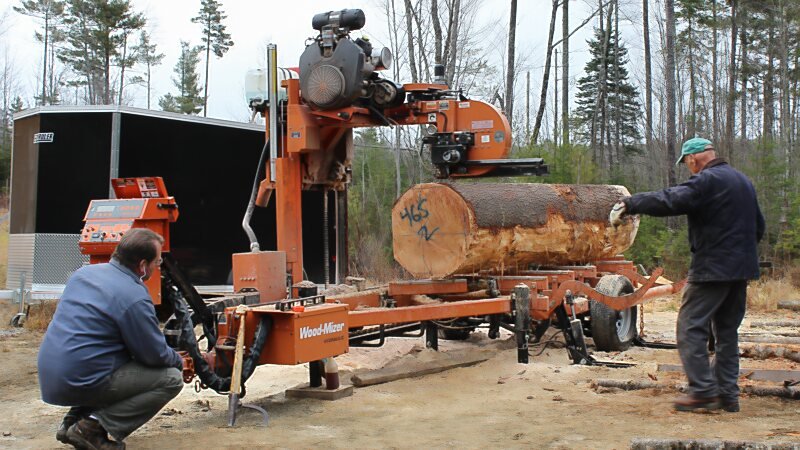
Understanding Wood Processing Methods for Shaker Oval Box Bands
When it comes to crafting Shaker boxes, the choice of lumber and the method used to process it are crucial to both the workability and quality of the final product. Finding the right material for box bands isn’t as simple as heading to your typical lumber yard. Shaker box bands require hardwood that is clear of knots and other defects, and they typically need to be cut to a thickness of around 1/8". While you may be able to find a few companies online where you can purchase thin stock, the person doing the cutting and grading most likely hasn’t bent boxes before, and even minor defects that might seem acceptable can cause significant problems during the bending process.
Before modern machinery, bands for original Shaker boxes were carefully cut and planed using hand tools. Today, with the advent of modern equipment, there are essentially three common methods for preparing wood for Shaker box bands: sawing lumber (from raw logs), resawing lumber, and flitch-slicing veneer. Each method has its own advantages and disadvantages, and understanding these can help you make an informed decision when selecting materials for your Shaker boxes.
Sawn Lumber for Shaker Box Bands


Sawn lumber involves cutting the wood directly from logs, air-drying it, and then further processing it by cutting to length and width, followed by abrasive planing (sanding) to achieve the desired thickness. Although the process is time-consuming and results in some material loss due to saw kerf waste and the abrasive planing process, this method, in my opinion, produces the best material for Shaker box bands.
Various sawing methods can be employed—plain sawn, quarter sawn, rift sawn, or live sawn—with quarter sawn and rift sawn being particularly valued for their stability and workability. The primary benefit of sawn lumber over sliced veneer stock is the absence of knife marks, which can weaken the wood and increase the risk of splintering during the bending process. Additionally, sawing allows for greater control over the thickness of the lumber, whereas veneer mills typically offer only specific thicknesses. Air-drying the lumber, rather than kiln drying, preserves the flexibility of the wood fibers, making it easier to bend without cracking. Multiple passes through a drum or belt sander result in a smoother, more stable end product, perfect for Shaker box construction.
Resawn Lumber for Shaker Box Bands


Resawn lumber involves taking a thicker piece of pre-sawn lumber and cutting it into thinner pieces, typically using a bandsaw or tablesaw in the workshop. While this method can be effective, it’s extremely time-consuming and is often best suited for smaller quantities of Shaker boxes. It’s crucial to select lumber that has not been kiln dried, as kiln-dried wood can be more brittle than air-dried wood, making it more prone to cracking during the bending process.
Resawing can also lead to significant material waste due to the saw kerf and subsequent sanding required to achieve the final thickness. Although resawing can be successful, it demands precision and care. The process can be somewhat dangerous if not handled carefully, particularly when using a tablesaw, as the lumber being resawn is typically fairly large and cumbersome, often requiring the piece to be flipped due to the limited saw depth.
Flitch-Sliced Veneer for Shaker Box Bands

Flitch slicing is a wood processing technique where a log, or "flitch," is sliced into thin sheets or veneers using specialized industrial machinery. This method is typically used for producing decorative veneers that are glued onto plywood products for use in the furniture and cabinetry industry—although thicker slices can be produced that are suitable for band stock. Flitch slicing is efficient and maximizes material yield, making it a cost-effective option, especially when working with rare or expensive wood species.
One drawback of flitch slicing is the formation of knife marks, which can weaken the veneer and increase the risk of splits during the bending process. Additionally, sliced veneer typically undergoes forced drying to quickly reduce moisture content. While this accelerates production, it can also make the veneer more brittle compared to air-dried sawn lumber, which retains more of its natural flexibility. Despite these drawbacks, flitch-sliced veneer is often chosen for its efficiency and cost-effectiveness, particularly in larger production settings.
Our Process: From Log to Lumber for Shaker Boxes


At LeHay’s Shaker Boxes, we choose to saw our lumber directly from logs, as described in the first method shown above. I believe this approach offers the best balance between quality and efficiency.
We start by sourcing high-quality logs from local lumbermen in Central Maine, supporting our local economy and ensuring the best material for our Shaker boxes. Once the logs arrive at our workshop, they are sawn into lumber using a Wood-Mizer bandsaw mill, allowing us to precisely control the cut and thickness of the material. After sawing, the lumber is air-dried—a slower but gentler process that maintains the natural flexibility of the wood fibers, crucial for bending stock. Once the lumber has been air-dried, it’s cut to length and width, then run through a drum sander to achieve a smooth, even surface. This ensures that the wood is ready for bending and finishing, with the ideal thickness needed for Shaker box construction.
Conclusion: Making the Right Choice for Your Shaker Box Bands
All of the methods discussed can be effective for creating Shaker box bands, and I’ve used each one at various times. However, in my experience, sawing bands directly from raw logs yields the best quality material for bending.
Have you worked with any (or all) of these methods? If so, I’d love to hear your opinions!